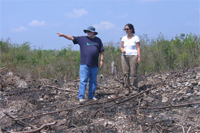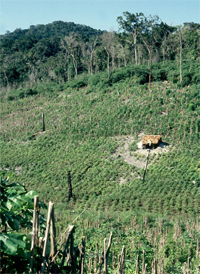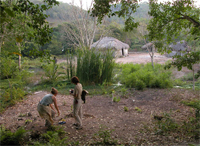Q&A with B. L. Turner II

Turner (left) and student setting up a transect to examine deforestation in southern Yucatan.

Agriculture-related deforestation

Addressing sustainability of local agriculture
Dr. Billie Lee Turner is the Gilbert F. White Chair of Environment and Society in the School of Geographical Sciences and Urban Planning and a member of the National Academy of Sciences and the American Academy of Arts and Sciences. His research addresses climate change by examining the interactions between humans and the environment that lead to deforestation and desertification.
How were you introduced to the term "sustainability"?
In 1987 while I was at Clark University, I became involved with an activity that led to the landmark volume, The Earth as Transformed by Human Action, which I edited along with Bob Kates, Bill Clark and others. Later I was involved with the Global Land Project and other efforts tied to global change and sustainability, and I played a bit role in developing Our Common Journey, the 1999 National Academy of Science report that staked out sustainability science.
What is the most important sustainability-related research project you are currently working on?
The Southern Yucatan Peninsular Region (SYPR) project is an interdisciplinary study of tropical forest change resulting from human-environment interactions. Begun in 1997, this project helped establish what is now known as “land change science.” A special feature on this sustainability subfield in the Proceedings of the National Academy of Sciences recently won an award from the Ecological Society of America for the best contribution to sustainability in 2008.
How do you think your research affects policy or other decisions in the "real world"?
The SYPR project, which is intended to be independent so as to maintain legitimacy among the many stakeholders in the region, nevertheless has provided the science used by NGOs and various state and federal agencies to address policy decisions. I am also currently working to create a sustainable land architecture model that is designed to be decision-maker friendly. That work is in conjunction with ASU’s Central Arizona - Phoenix Long-Term Ecological Research project and Decision Center for a Desert City.
What is the world sustainability challenge that concerns you most?
My largest concern is over the ideologies involved in the interpretations of the subject, especially the proliferation of extreme, polarizing views about the condition of the earth, the role of humans, and where we should go from here. These views interfere with our understanding of the dynamics in question.
June 30, 2009